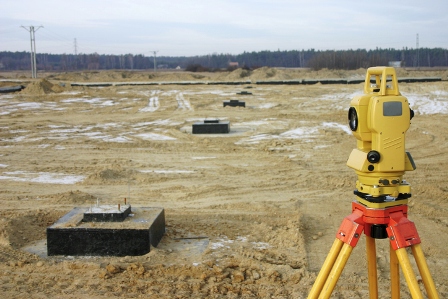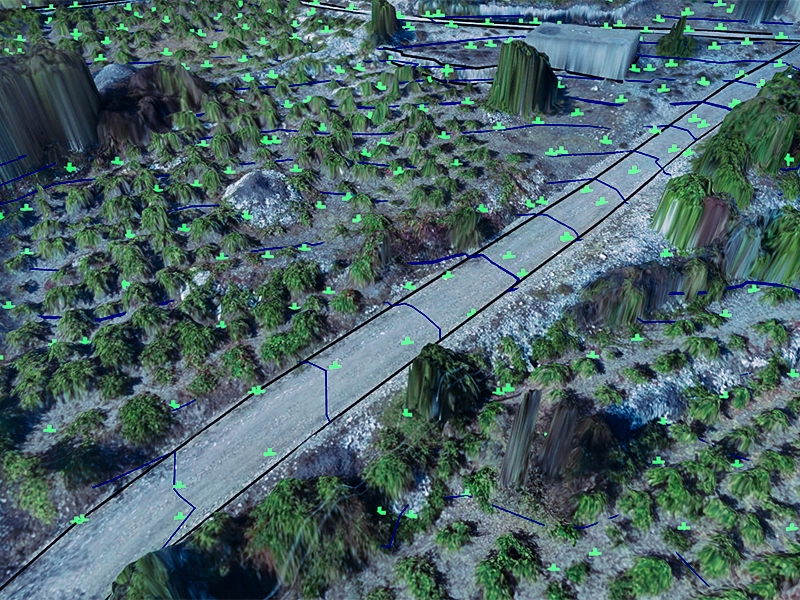Measured Building Surveying for Real Estate and Architectural Projects
Important Tools and Techniques in Setting Out Engineering
The technique of setting out engineering counts greatly on a suite of crucial tools and methods that underpin the precision and performance of project execution. Instruments such as property surveyor's degrees, overall terminals, and advanced GPS modern technology are indispensable for developing precise recommendation points. Moreover, the integration of traditional methods with modern methods, consisting of geospatial evaluation and 3D modeling, uses significant benefits in envisioning website conditions. Understanding exactly how these aspects communicate is critical for enhancing and minimizing errors job end results, yet the subtleties of their application frequently continue to be ignored. What implications does this hold for future design practices?
The Importance of Accurate Dimensions

The significance of accurate measurements expands beyond mere conformity; they are essential to the total efficiency of design processes. Errors can lead to material waste, job hold-ups, and raised labor costs, eventually affecting the task's profits. Specific measurements boost the top quality of the final product, guaranteeing that it performs as intended and meets the expectations of stakeholders.
Furthermore, the relevance of accurate measurements is obvious in different engineering self-controls, including civil, mechanical, and electric design. Hence, cultivating a society that prioritizes precision is crucial for the future of design.
Essential Devices for Laying Out
Laying out, a vital stage in the engineering and building procedure, depends greatly on certain tools that guarantee exact location and placement of structures. Amongst these devices, the property surveyor's degree sticks out, offering accurate straight dimensions vital for developing reference factors. This tool allows designers to determine elevation adjustments and maintain uniformity across the task site.
The total amount station is one more crucial device, integrating digital range dimension with angular measurement capabilities. This innovation boosts efficiency and accuracy in recording spatial data, permitting reliable website layout and planning.
Additionally, the usage of gauging tapes and marking tools, such as chalk lines or risks, is essential for briefly marking boundaries and crucial points on the website. These fundamental tools, though simple, are vital for making sure clear communication among the building and construction team pertaining to job specs.
Lastly, GPS technology has actually acquired traction in establishing out processes, giving real-time positioning data and dramatically enhancing accuracy over standard approaches. Jointly, these crucial devices develop the foundation of effective establishing out techniques, ultimately adding to the successful implementation of design and building tasks.
Advanced Evaluating Techniques
Advanced evaluating methods play an essential role in boosting the precision and effectiveness of design jobs. These techniques include a series of techniques that read this article offer accurate data for layout and construction. Conventional techniques, such as progressing and triangulation, have actually progressed right into extra sophisticated methods, including Total Terminal studies and Worldwide Navigation Satellite Systems (GNSS)
Complete Station gadgets integrate electronic theodolites with range dimension capabilities, allowing surveyors to gather precise place data with great speed. This modern technology significantly decreases errors linked with hands-on dimensions and offers real-time information processing. GNSS supplies unrivaled accuracy for large-scale projects by making use of satellite signals to establish exact positioning, which is crucial for ensuring and aligning structures conformity with design specifications.
Along with these tools, advanced techniques additionally incorporate geospatial evaluation and 3D modeling. These approaches make it possible for engineers to visualize surface and site conditions better, assisting in far better decision-making during the preparation stage. By employing these advanced checking strategies, engineering tasks can attain greater accuracy in design, minimize rework, and ultimately enhance total project success.
Digital Modern Technology in Engineering
The assimilation of digital technology has actually revolutionized engineering techniques, boosting both efficiency and precision throughout different techniques. Devices such as Structure Details Modeling (BIM) promote the visualization and management of complex tasks, allowing designers to collaborate flawlessly and make educated decisions. This technology makes it possible for the development of thorough 3D versions, which can be examined for structural integrity and performance prior to construction starts.

The application of fabricated knowledge and next equipment learning in design procedures even more improves predictive upkeep and optimization of resources. Overall, electronic innovation is reshaping the engineering landscape, driving development, and ensuring that tasks are completed with greater performance and lowered danger.
Best Practices for Application
When carrying out electronic technology in design, it is crucial to establish a strategic approach that aligns with project objectives and organizational abilities. An extensive evaluation of existing workflows and technology infrastructure is crucial to recognize gaps and opportunities for renovation. Engaging stakeholders early at the same time promotes partnership and ensures that the innovation meets individual demands.

Job managers ought to adopt an iterative implementation technique, enabling modifications based upon real-time comments and efficiency examinations. This dexterous technique not just alleviates dangers but also promotes continual renovation by including lessons learned.
Conclusion
In conclusion, the combination of essential tools and progressed methods in laying out engineering is crucial for making certain precision in dimensions and successful job execution. Employing instruments such as surveyor's degrees, complete terminals, and GPS innovation, along with modern-day surveying methods, boosts article source precision and lowers the probability of errors. Embracing ideal techniques in application even more maximizes these processes, inevitably cultivating improved project outcomes in the engineering and building and construction sectors.
The self-control of setting out design relies heavily on a suite of necessary devices and techniques that underpin the precision and efficiency of project implementation.Furthermore, the importance of exact measurements is obvious in various engineering self-controls, consisting of civil, mechanical, and electric design. By utilizing these sophisticated checking techniques, engineering projects can attain better accuracy in layout, minimize rework, and eventually improve total task success.
Overall, digital innovation is improving the design landscape, driving development, and ensuring that jobs are completed with higher effectiveness and reduced risk (setting out engineering).In conclusion, the assimilation of vital devices and progressed methods in setting out design is crucial for guaranteeing accuracy in dimensions and effective job implementation